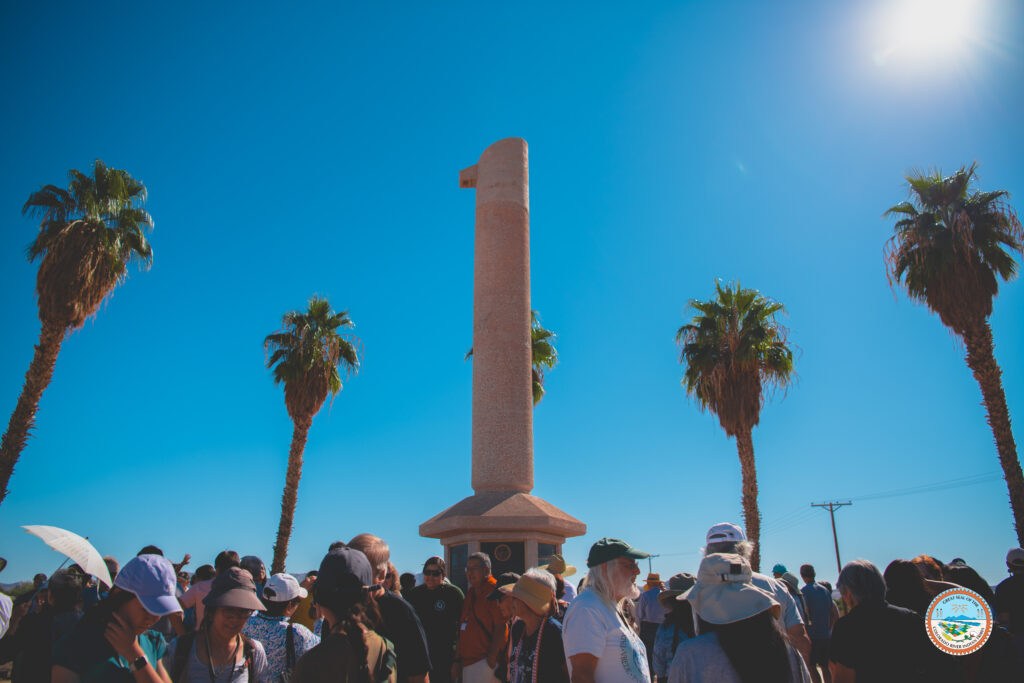In the quiet valley of the Colorado River Indian Tribes (CRIT), once stood one of the largest Japanese American incarceration camps of World War II, the Poston War Relocation Center. Between 1942 and 1945, nearly 18,000 men, women, and children of Japanese ancestry were forced to live there.
This past weekend, the annual Poston Pilgrimage returned to the CRIT Reservation, drawing in the largest gathering to date. More than 100 visitors met at the CRIT Museum to honor those who have lost their lives while imprisoned at Poston. Starting the weekend off at Blue Water Casino was an introduction of the event with descendants of former incarceratees, Chairwoman Amelia Flores, Debbie Pettigrew, and Karen Harjo. Many of the adults who once lived in the camps have since passed on, leaving their children to share stories of life inside, memories that continue to move and teach new generations.
This year’s pilgrimage carries special meaning with the arrival of the Ireichō, also known as The Book of Names.
The Ireichō is part of the Irei: National Monument for the WWII Japanese American Incarceration, a national project dedicated to honoring more than 125,000 people of the Japanese ancestry who were unjustly imprisoned during the war.
For the first time, every individual’s name has been compiled into one permanent record. The Ireichō follows the Japanese Buddhist tradition of kakochō, “The Book of the Past,” in which the names of those who have passed are written to be remembered and respected.
Unveiled at the Japanese American National Museum, the Ireichō invites visitors to place a red hank (stamp) beneath each name as an act of remembrance. The book has since traveled to historic incarceration sites across the country, allowing families, descendants, and visitors to honor those who lived through that time in history.
The day began with a blessing from Duncan Ryūken Williams, the Ireichō’s co-founder and Soto Zen Buddhist priest.
The Ase S’maav Parker Boys and the River Tribes United Dance Group shared songs and danced for the descendants of Poston’s former residents. The ceremony closed with a memorable moment as children and families were invited to stamp the Book of Names.
Each year, the Poston Pilgrimage brings together descendants, historians, and community members returning to the monument to honor those who lived behind the barbed wire and ensures their stories continue to be told. What makes Poston unique is its shared history between the Japanese American community and the tribal nations whose land was used for the camp. Built on CRIT lands under federal direction, the camp became a symbol of resilience and reflection, a reminder of the injustices endured and strength that followed.
During that time, CRIT’s own history was also shifting, as the relocation of Hopi and Navajo families and new irrigation projects began to reshape the valley. The very barracks once used to confine Japanese Americans later became homes for tribal families and farm workers. As Chairwoman Amelia Flores reflected, “ I never knew until later in life that the place I called home was a barrack.”
During the pilgrimage, visitors walk the dusty grounds where the barracks once stood, visit the Poston Memorial Monument, and join workshops that share family stories and artifacts. For many, the desert air carries both sorrow and healing.
The pilgrimage serves as more than remembrance; it’s a bridge between cultures and generations. It acknowledges the shared histories of displacement, perseverance, and rebuilding that both Japanese Americans and Indigenous people experienced.
Today, the Poston site remains a National Historic Landmark, and through the efforts of the Poston Community Alliance and the Colorado River Indian Tribes, the legacy of those years continues to be preserved for future generations.
